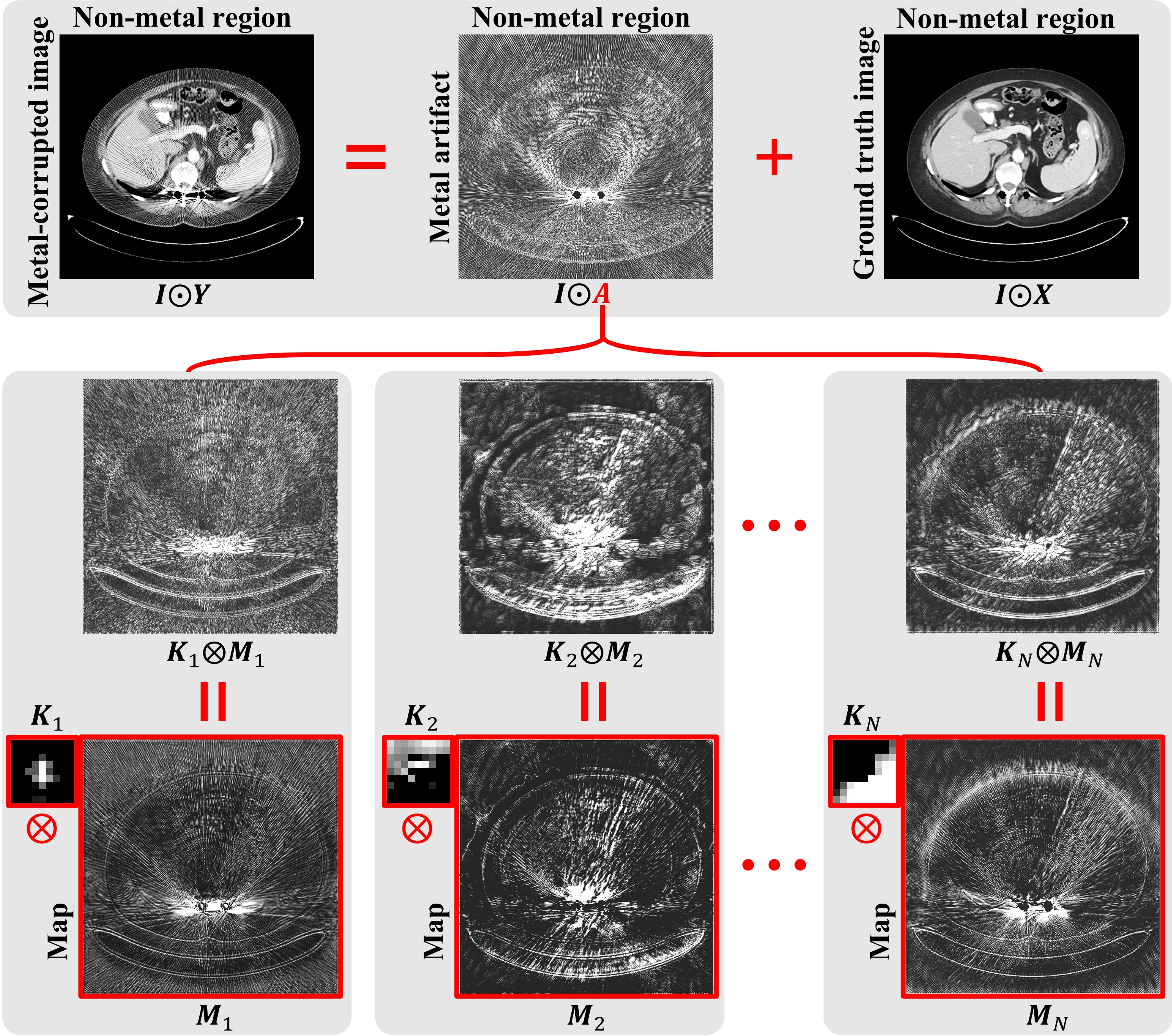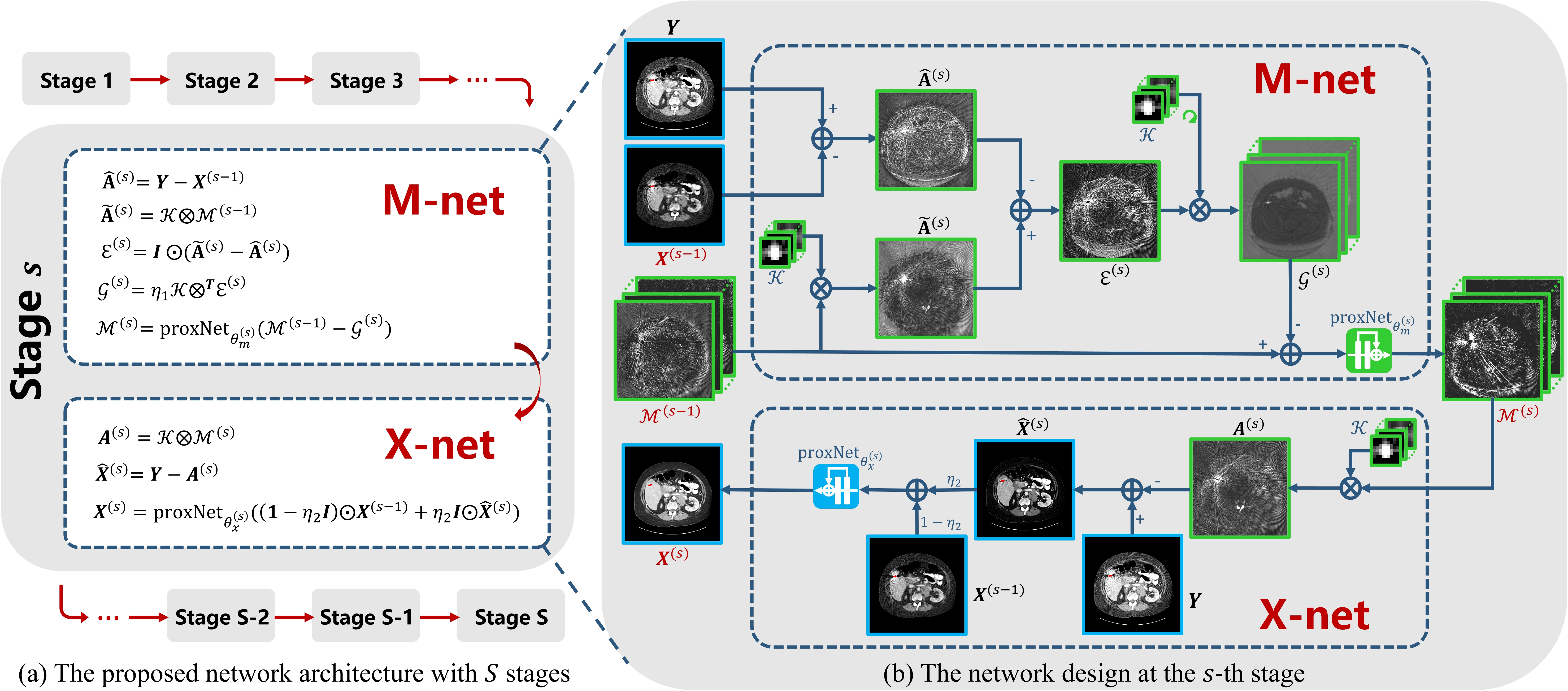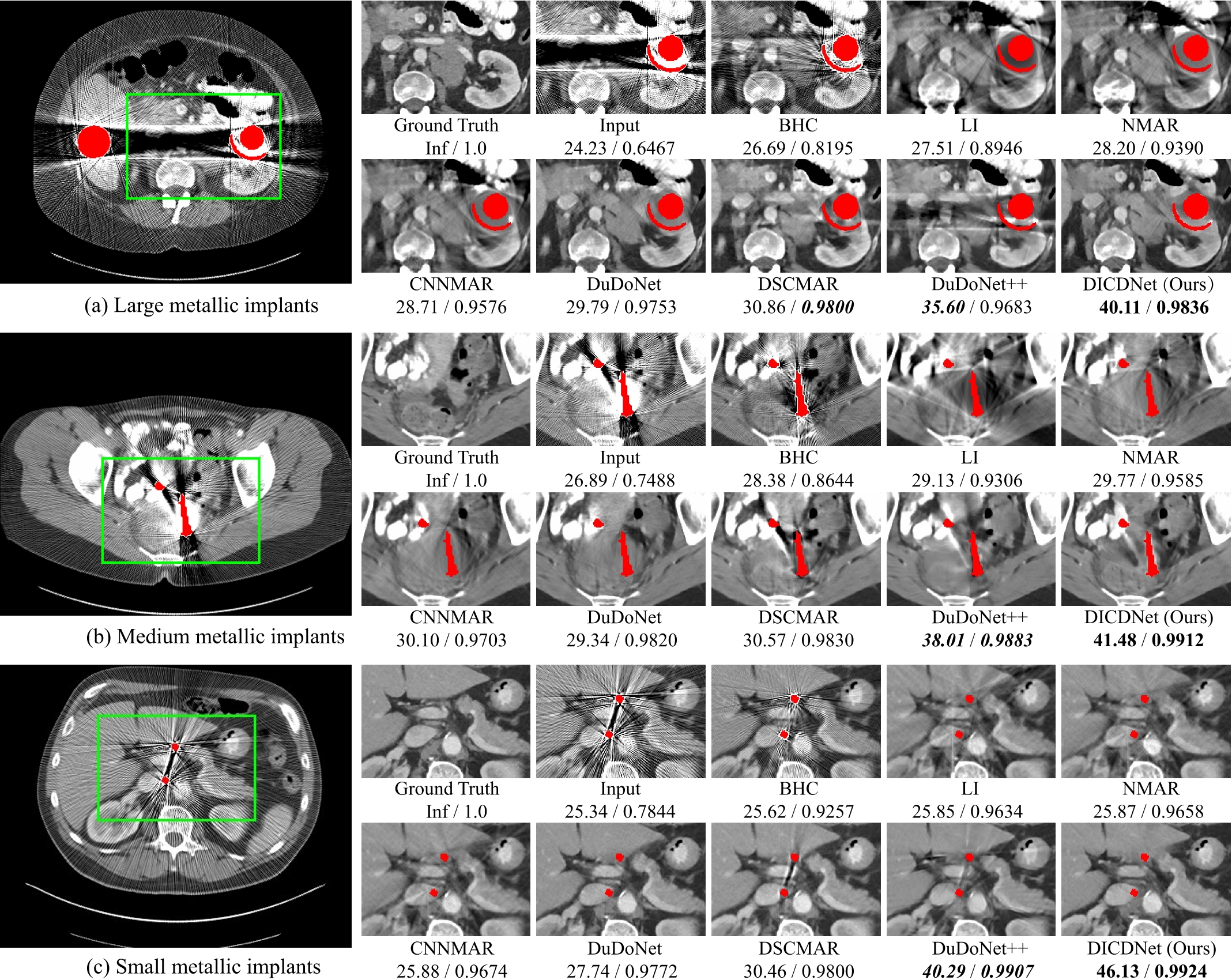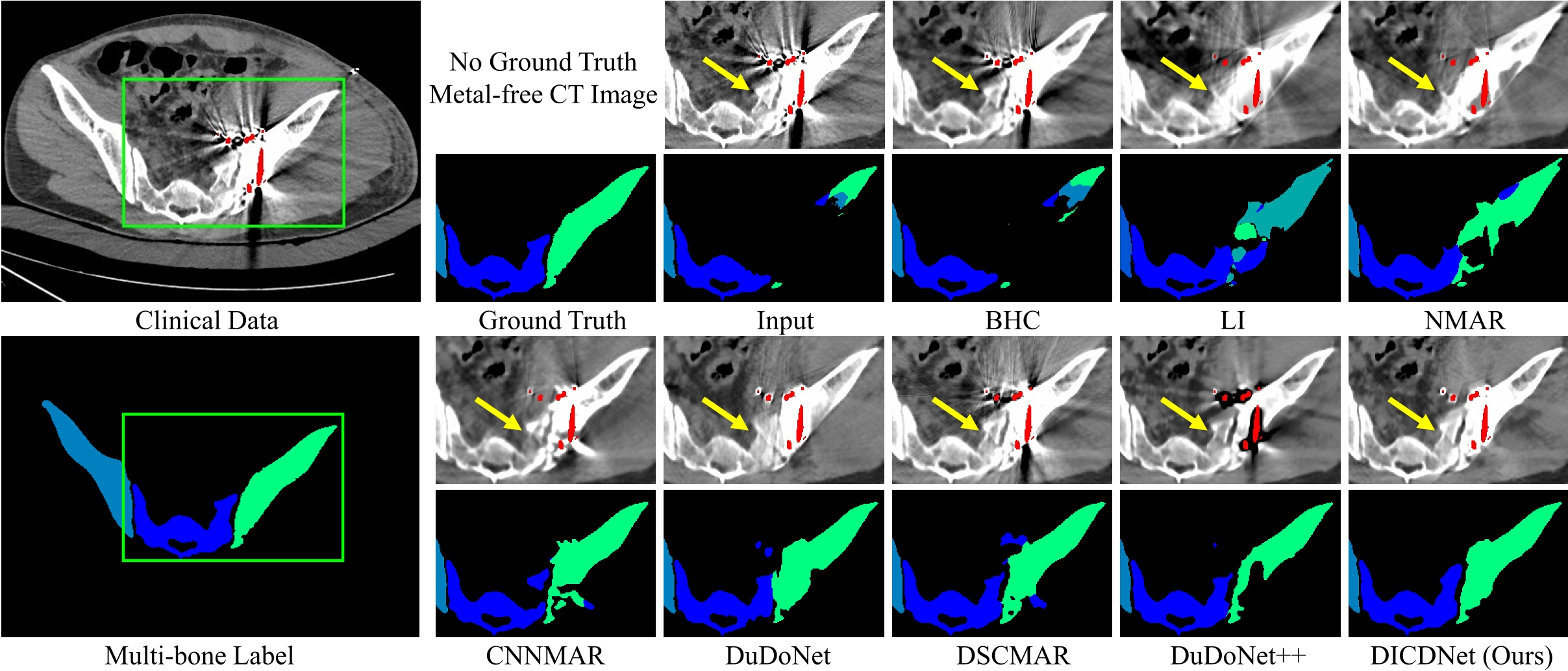DICDNet: Deep Interpretable Convolutional Dictionary Network for Metal Artifact Reduction in CT Images (TMI2021)
Hong Wang, Yuexiang Li, Nanjun He, Kai Ma, Deyu Meng, Yefeng Zheng
DICDNet [Google Drive]
DICDNet_supp.pdf, [Google Drive] [Baidu NetDisk] password:h8yvdu
Computed tomography (CT) images are often impaired by unfavorable artifacts caused by metallic implants within patients, which would adversely affect the subsequent clinical diagnosis and treatment. Although the existing deep-learning-based approaches have achieved promising success on metal artifact reduction (MAR) for CT images, most of them treated the task as a general image restoration problem and utilized off-the-shelf network modules for image quality enhancement. Hence, such frameworks always suffer from lack of sufficient model interpretability for the specific task. Besides, the existing MAR techniques largely neglect the intrinsic prior knowledge underlying {\textcolor{black}{metal-corrupted CT images}} which is beneficial for the MAR performance improvement. In this paper, we specifically propose a deep interpretable convolutional dictionary network (DICDNet) for the MAR task. Particularly, we first explore that the metal artifacts always present non-local streaking and star-shape patterns in CT images. Based on such observations, a convolutional dictionary model is deployed to encode the metal artifacts. To solve the model, we propose a novel optimization algorithm based on the proximal gradient technique. With only simple operators, the iterative steps of the proposed algorithm can be easily unfolded into corresponding network modules with specific physical meanings. Comprehensive experiments on synthesized and clinical datasets substantiate the effectiveness of the proposed DICDNet as well as its superior interpretability, compared to current state-of-the-art MAR methods.
This repository is tested under the following system settings:
Python 3.6
Pytorch 1.4.0
CUDA 10.1
GPU NVIDIA Tesla V100-SMX2
The proposed DICDNet is naturally built by unfolding the corresponding optimization algorithm.
Please download from SynDeepLesion, and put the dataset into the folder "DICDNet/data" as:
data/train/train_640geo
data/train/train_640geo_dir.txt
data/train/trainmask.npy
data/test/test_640geo
data/test/test_640geo_dir.txt
data/test/testmask.npy
python train_DICDNet.py --gpu_id 0 --data_path "data/train/" --batchSize 16 --batchnum 1000 --log_dir "logs/" --model_dir "models/"
Please note that for the demo, “batchnum=1, batchSize=1". Please change it according to your own training set.
python3 test_DICDNet.py --gpu_id 0 --data_path "data/test/" --model_dir "pretrain_model/DICDNet_latest.pt" --save_path "save_results/"
Please refer to https://github.com/hongwang01/OSCNet/tree/main/metric
@article{wang2021dicdnet,
title={DICDNet: Deep Interpretable Convolutional Dictionary Network for Metal Artifact Reduction in CT Images},
author={Wang, Hong and Li, Yuexiang and He, Nanjun and Ma, Kai and Meng, Deyu and Zheng, Yefeng},
journal={IEEE Transactions on Medical Imaging},
volume={41},
number={4},
pages={869--880},
year={2021},
publisher={IEEE}
}
[1] Hong Wang, Yuexiang Li, Haimiao Zhang, Jiawei Chen, Kai Ma, Deyu Meng, and Yefeng Zheng. InDuDoNet: An interpretable dual domain network for CT metal artifact reduction. In International Conference on Medical Image Computing and Computer Assisted Intervention, pages 107–118, 2021.
[2] Hong Wang, Yuexiang Li, Haimiao Zhang, Deyu Meng, and Yefeng Zheng. InDuDoNet+: A Deep Unfolding Dual Domain Network for Metal Artifact Reduction in CT Images. Medical Image Analysis, 2022.
If you have any questions, please feel free to contact Hong Wang (Email: hongwang9209@hotmail.com)



